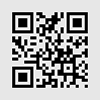
User interface
The status bar shows a lot of information, e.g., a brief description of each
function. Simply move the mouse pointer over the command or button for this
information.
(5) Status bar
00108
2.2. Overview - Layouts
To switch backwards and forwards between different layouts, click on the right-
hand side in the menu bar on the name of the layout you want, or use the
View >
Layout
command.
For important tasks several layouts have already been defined. The following
layouts are available:
Which predefined
layouts are there?
Acquire images ("Acquisition" layout)
View and process images ("Processing" layout)
Measuring images ("Count and Measure" layout)
Generate a report ("Reporting" layout )
In contrast to your own layouts, predefined layouts can't be deleted. Therefore,
you can always restore a predefined layout back to its originally defined form. To
do this, select the predefined layout, and use the
View > Layout > Reset Current
Layout
command.
Your software's user interface is to a great extent configurable, so that it can
easily be adapted to meet the requirements of individual users or of different
tasks. You can define a so-called "layout" that is suitable for the task on hand. A
"layout" is an arrangement of the control elements on your monitor that is optimal
for the task on hand. In any layout, only the software functions that are important
in respect to this layout will be available.
What is a layout?
Example: The
Camera Control
tool window is only of importance when you
acquire images. When instead of that, you want to measure images, you don't
need that tool window.
That's why the "Acquisition" layout contains the
Camera Control
tool window,
while in the "Count and Measure" layout it's hidden.
Which elements of the
user interface belong to
the layout?
The illustration shows you the elements of the user interface that belong to the
layout.
(1) Toolbars
(2) Tool windows
(3) Status bar
(4) Menu bar
00013
6
